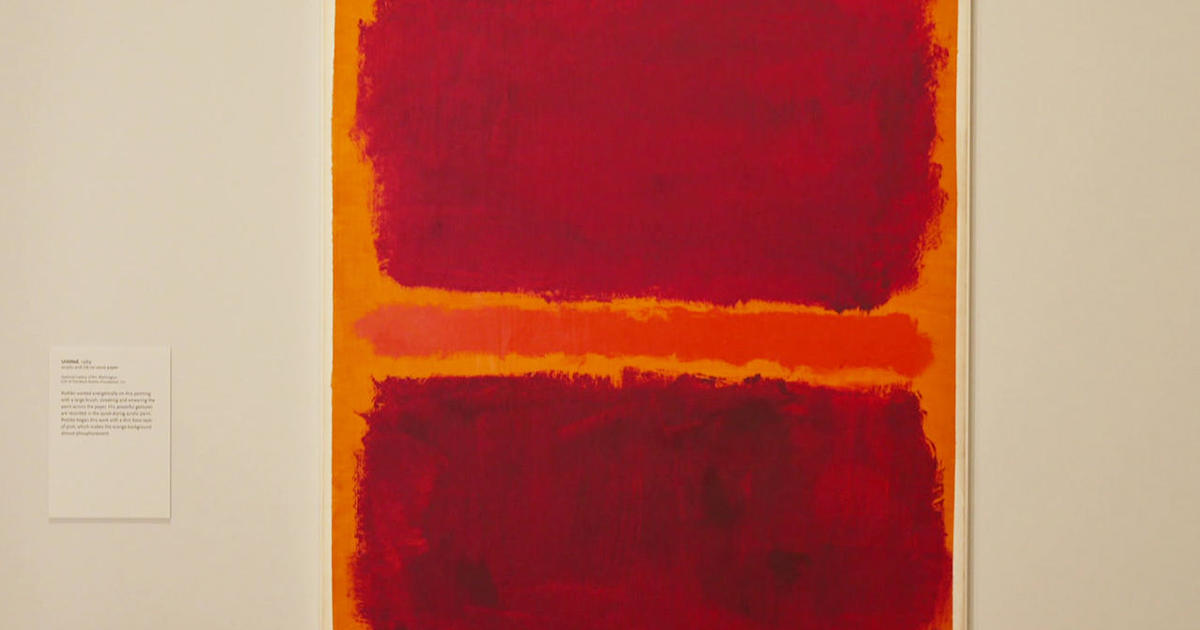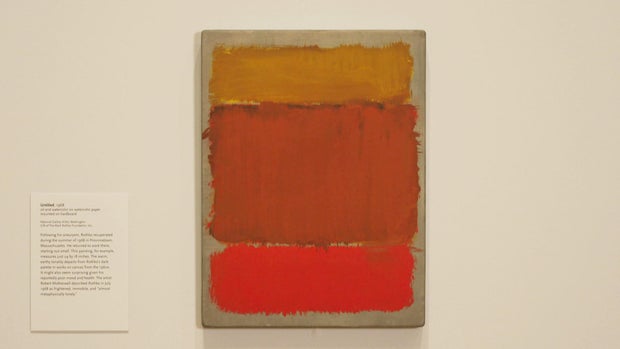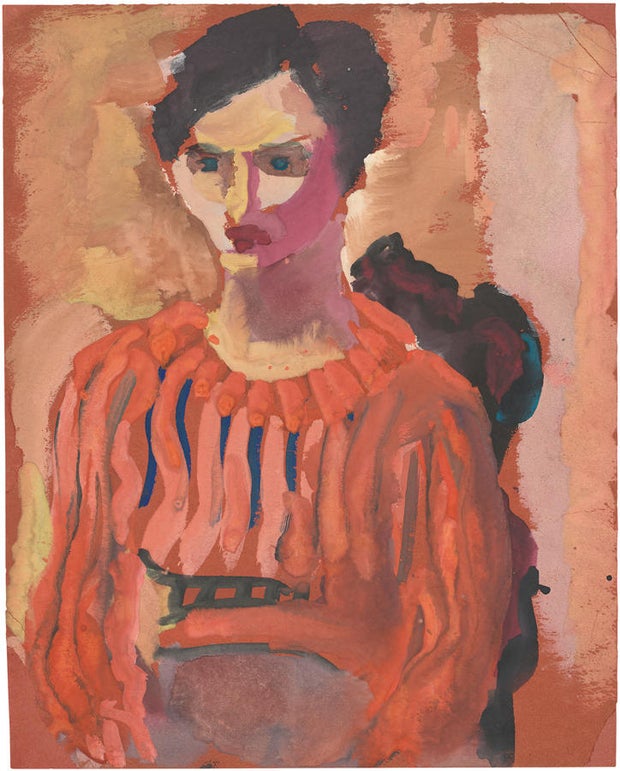A revelatory exhibition of Mark Rothko paintings on paper
 [ad_1]
[ad_1]
His works are mesmerizing and recognized worldwide – swaths of color, and floating, fuzzy-edged rectangles … all part of the signature vision of the formidable 20th century artist Mark Rothko.
"Everybody knows and loves Rothko's large abstract canvases, but very few people know that he made nearly 3,000 works on paper," said curator Adam Greenhalgh.
Now, an exhibit at the National Gallery of Art in Washington, D.C., hopes to tell a lesser-known Rothko story – the trail of paper works the artist left behind.
Greenhalgh said, "We can see his sources, we can see his early ambitions, his aspirations, and the way that he understands paper to be just as significant and important as his much-better-known canvases."
Rothko on paper is equally as innovative, and he did not consider these to be studies, or prep work – in fact, they are mounted similarly to how his canvases would be hung. "They're attached to either a hardboard panel or linen, and wrapped around a stretch or a strainer to give them this three-dimensional presence," Greenhalgh said.
Born Markus Rothkovitch in what is now Latvia, he immigrated to Portland, Oregon, with his family in the early 1900s. He eventually moved to New York – working, teaching and struggling, but also learning and evolving as an artist. Many of his early paper works echo other visionaries, and hint at what was to come.
The colors in the background of portraits remind one of Rothko's later works. "Some of these sort of blocks of color in the background really point to the later abstractions to come," Greenhalgh said.
Kate Rothko Prizel, the artist's daughter, said her father was a loving, hard-working man who anchored their family. "He sort of tried to keep a 9:00 to 5:00, 9:00 to 6:00 schedule, tried to have dinner with the family every night," she said.
He was also intense and private, especially when painting. "I, as a smaller child, was fairly often dropped off by my mother at the studio when she needed to get something done," said Prizel. "And it was very clear, even for me at a young age, that my father did not like to be watched painting. He would always set me up in my own corner with my own artwork, with the idea that I was gonna be absorbed in my work, he was gonna be absorbed in his work."
"It was for him this kind of sacred, I think, deeply emotional, psychological process," said Christopher Rothko, the artist's son. "To be distracted during that was something that would be really so counterproductive. So, that sort of mystery carries over to his materials. He is known for making a lot of his own paints, taking ground pigments, and making his own home brew.
"And part of the luminescence that we see in his work is the result of him constantly experimenting, trying to come up with the right concoction. I don't think those were secrets he was particularly guarding, but it was simply part of him making something that was very, very personal," Christopher said.
That sense of intimacy — that emotional truth — is evident today for so many who experience Rothko's work. And with blockbuster exhibits in Paris and Washington, and the 2021 auction of the artist's 1951 painting titled "No. 7" for $82.5 million, Rothko's popularity is soaring, more than 50 years after his death.
Christopher Rothko says his father sought to create a universal language, one that spoke to people's hearts.
"I often think about going to Rothko exhibitions," he said. "It's a great place to be alone together. Ultimately, it's a journey we all make ourselves, but so much richer when we do it in the company of others."
For more info:
Story produced by Julie Kracov. Editor: Chad Cardin.




Comments
Post a Comment